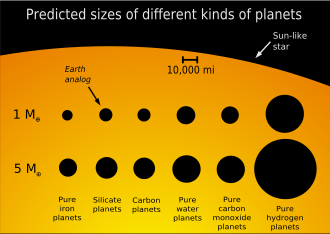
An iron planet is a type of planet that consists primarily of an iron-rich core with little or no mantle. Mercury is the largest celestial body of this type in the Solar System (as the other terrestrial planets are silicate planets), but larger iron-rich exoplanets are called super-Mercuries.
Contents
Iron is the sixth most abundant element in the universe by mass after hydrogen, helium, oxygen, carbon, and neon.


